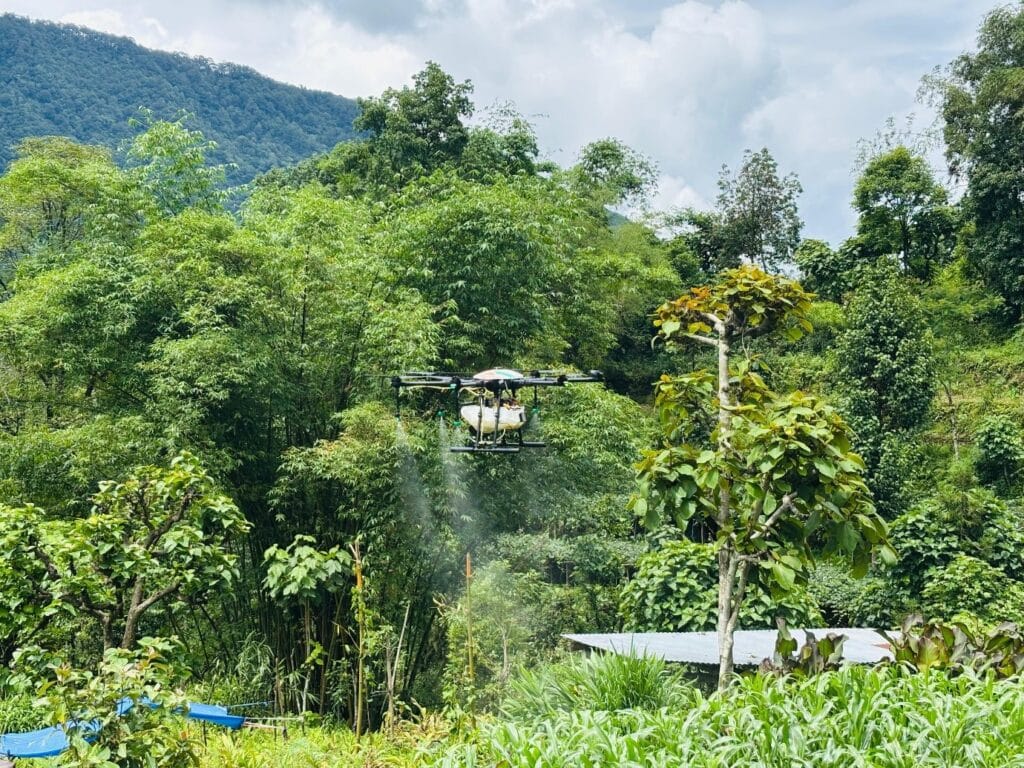
Agriculture is the backbone of our economy, but farmers often face unpredictable challenges caused by nature. One of the biggest hurdles during the crop cycle is continuous or heavy rainfall. While rain is essential for crop growth, excessive moisture creates an environment favourable for fungal infections, pest outbreaks, and nutrient washout. In such situations, farmers need timely interventions like spraying fungicides, pesticides, and micronutrients. But traditional spraying methods face huge limitations during prolonged rainy spells.
At least ~1.57 lakh hectares of cropped area had been reported damaged up to July 21, 2025 across 11 states/UTs (official reply in Rajya Sabha). State-wise (ha): Maharashtra 91,429, Assam 30,475, Karnataka 20,211, Meghalaya 6,372, Punjab 3,569, Arunachal 1,714, J&K 1,241, Manipur 1,440, Odisha 753, Sikkim 7, Nagaland 11.
1.Timely Application Despite Wet Fields
Heavy rainfall leaves fields waterlogged and muddy, making it nearly impossible for tractors or manual labourers to carry out spraying operations. Using MD-10H/MD-10H+/MD-10HV1 drones are however, fly above the ground and directly reach crops without being affected by field conditions. This ensures that protective sprays are applied on time, preventing disease outbreaks and yield loss.
2. Quick Coverage in Narrow Time Windows
When there’s a short break between rains, farmers must act fast. Using MD-10H/MD-10H+/MD-10HV1 drones can cover 4 to 5 acres per hour, much faster than manual labour or traditional equipment. This efficiency allows farmers to make the most of short dry windows before the next spell of rainfall.
3. Effective Disease & Pest Control
Rainy conditions are ideal for the spread of fungal diseases like blast, rust, mildew, and leaf spots. With drones, farmers can instantly apply fungicides and pesticides with high precision, reducing crop damage and safeguarding yield. The fine mist created by drones also ensures uniform coverage on crop leaves, which is crucial in wet weather.
4. Reduces Dependency on Labor
During heavy rains, labour availability becomes scarce, as most workers avoid working in harsh conditions. Drones eliminate the need for large spraying teams, reducing dependency on labour and ensuring that critical spraying operations are not delayed.
5. Minimizes Crop Damage
Using tractors or manual sprayers during soggy conditions can damage crops and compact soil, which negatively impacts growth. Drones are contactless and do not disturb soil or plants, helping farmers protect crop health even in vulnerable conditions.
6. Cost-Effective and Safe
Since MD-10H/MD-10H+/MD-10HV1 require fewer resources, they save water, and labour costs compared to traditional methods. Additionally, farmers and workers are not directly exposed to chemicals during spraying, making drone-based operations safer for human health.
7. Supports Sustainable Farming
With precise spraying, drones reduce agricultural input usage by up to 30%, minimizing environmental pollution. In the long run, this not only benefits farmers financially but also supports sustainable and eco-friendly agriculture practices.
